9 de marzo 2020
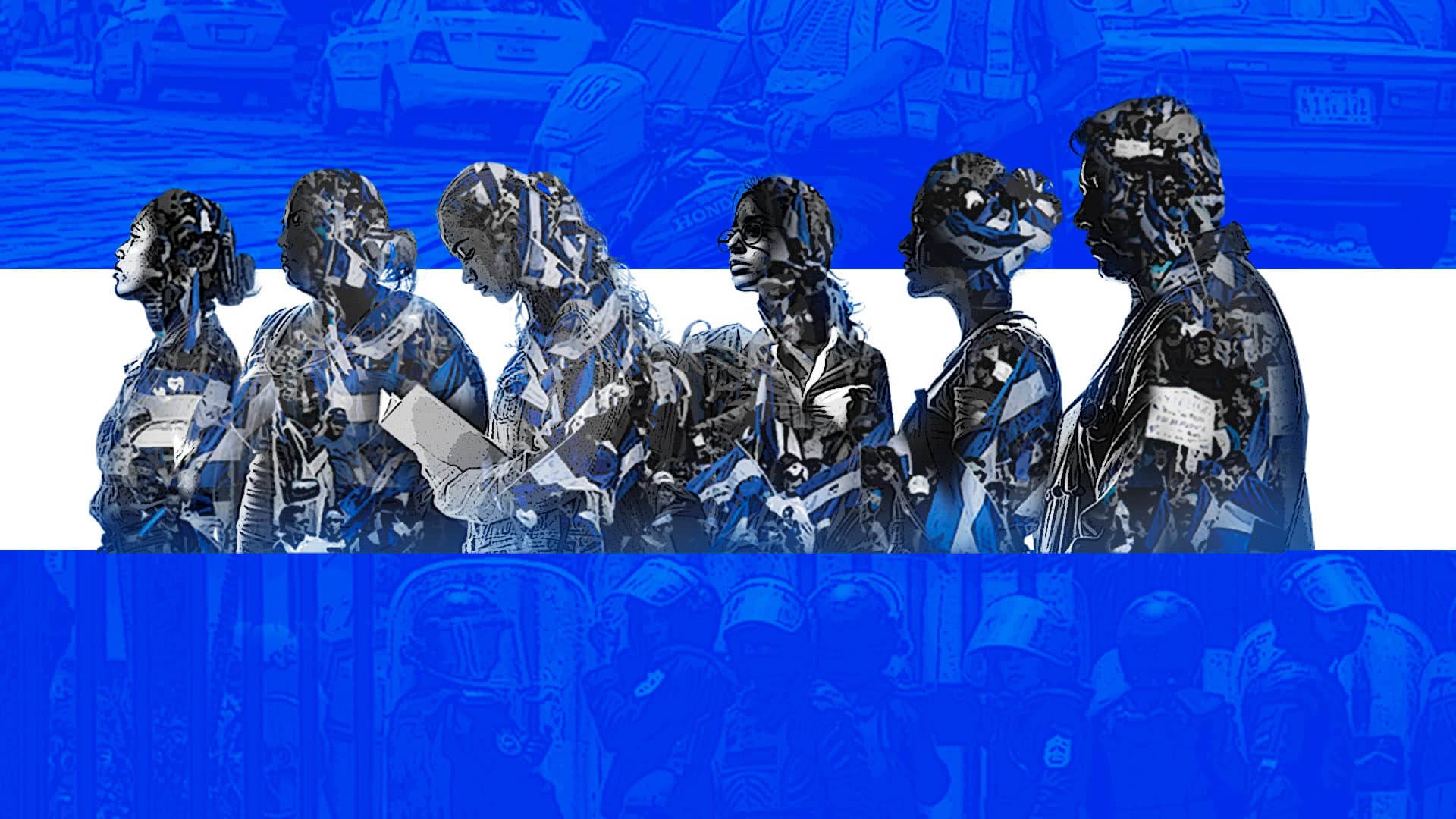
Six Years With April in Tow: Life Under Nicaragua's New 'Normal'

PUBLICIDAD 1M
PUBLICIDAD 4D
PUBLICIDAD 5D
The community’s farewell to Cardenal: “This is how we lived with him,” explained Esperanza Guevara Silva
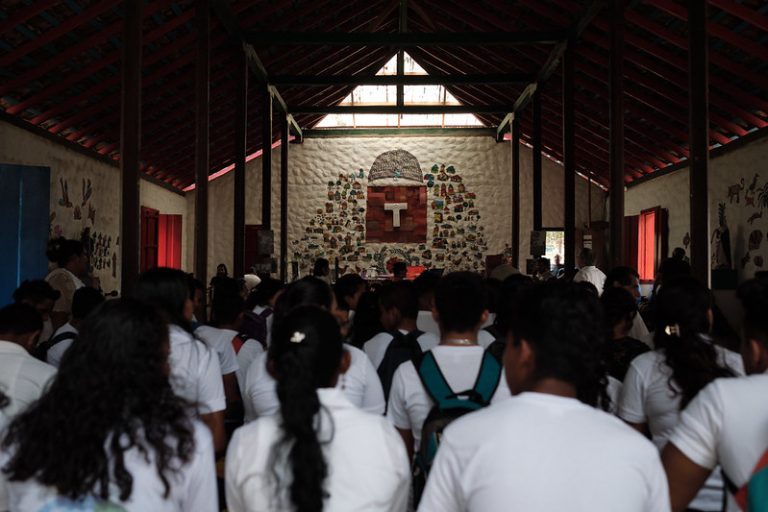
The priest and poet, Ernesto Cardenal, once again called them together, the men and women, the elderly, the youths, the children. Everyone from Solentiname was invited to the same table this Friday when the remains of the Trappist priest arrived at the archipelago where he founded his utopia in 1966 – a community of contemplative prayer founded upon the Gospels and art.
The ashes of Ernesto Cardenal, known to everyone on the island of Mancarrón as “father”, arrived discreetly on the archipelago accompanied by Bosco Centeno, one of the priest’s “spiritual children”; those whom the priest took under his wing in the 1970s. According to Centeno, a retired Lieutenant Colonel in the Nicaraguan army, the remains were buried Friday morning during a small, discreet and intimate ceremony, six days following Cardenal’s death in Managua at the age of 95.
Cardenal, a key figure in Liberation Theology, was to have been buried on Saturday, according to Centeno. However, they decided to carry out the ritual earlier to avoid being set upon by gangs controlled by the Ortega-Murillo dictatorship, as happened during the funeral mass held Tuesday in the Metropolitan Cathedral in the capital.
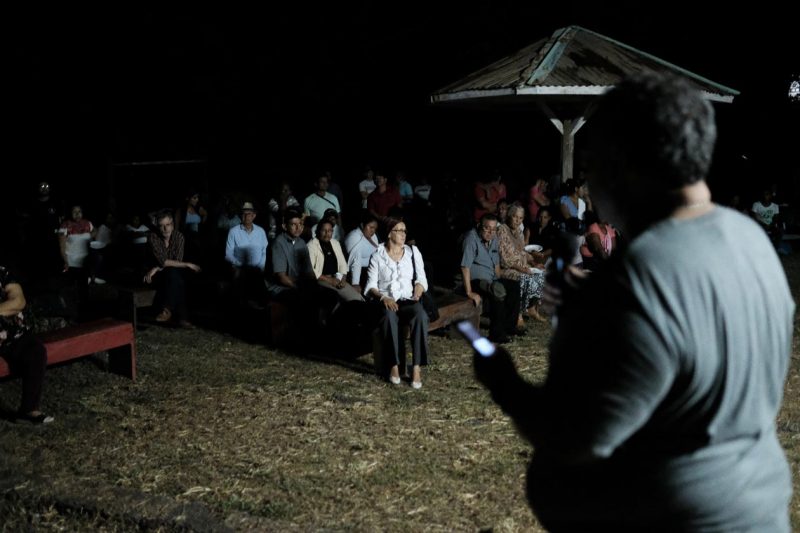
In 1966, Father Ernesto Cardenal founded a religious community in Solentiname, consisting of fishermen, farmers and artisans, which would later become world famous. | Photo: Carlos Herrera
We held (the burial) “in secret, to avoid harassment,” said Bosco Centeno, a member of the Solentiname community. “We decided to bury him here in the monument, at the rock where Solentiname’s heroes and martyrs are buried,” referencing the former guerrillas Laureano Mairena, Elvis Chavarria, Alejandro Guevara, and other members of the community led by Cardenal in the 70s, with his preaching of the Gospel.
After Cardenal’s remains were buried, inhabitants from across the archipelago began to arrive on the island of Mancarrón, along with the poet’s friends and members of the press, who travelled from Managua to witness the farewell in Solentiname where Cardenal had asked to be buried.
His presence on the archipelago is clearly visible. Upon disembarking in Mancarrón, one is greeted by a sign announcing arrival at “the P.E. Cardenal community”. Although the reason for this gathering was funereal, the mood on the island was one of enthusiasm amongst those gathered, as they explained to each other why they were grateful to the “father”.
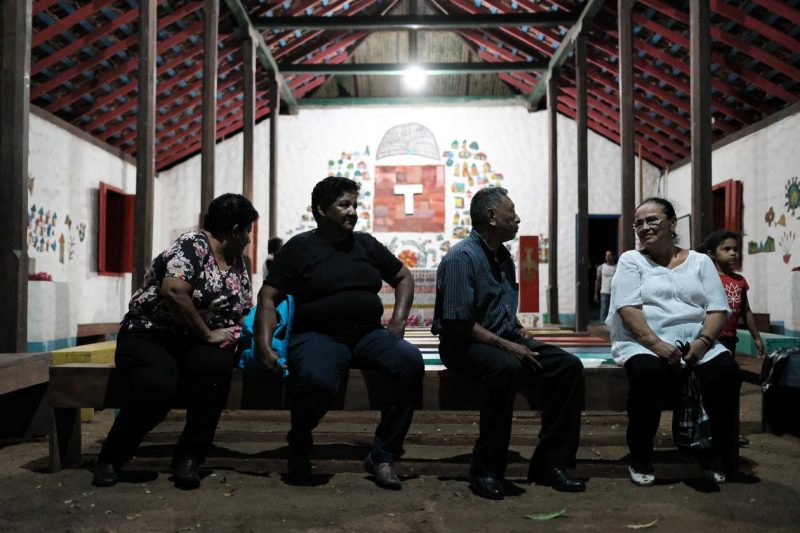
The poet Cardenal was bid farewell in the chapel of the Solentiname community. | Photo: Carlos Herrera
“Before Ernesto arrived, there wasn’t even one little school. Now we have nine schools. His name has been present in our work. We have managed to install primary education throughout Solentiname,” said Esperanza Guevara Silva, an inhabitant of Solentiname, whose mother helped the poet get settled on the island in the mid-1960s.
On the island of Mancarrón there is an uncompromising heat, sticky with humidity. Dozens of children play on the swings near the mausoleum of the “Martyrs of Solentiname”, while the adults set up a projector and speakers, and arrange plastic chairs in anticipation of the arrival of Cardenal’s remains.
The residents of Solentiname were preparing for more than a night of simple and respectful accompaniment of the dead, they were preparing for a nighttime celebration to render homage to the man who put this archipelago, rooted in the vastness of Lake Cocibolca, on the world map of literature and art.
Following Father Cardenal’s death, there are those who say that Solentiname is synonymous with Macondo, in the sense that both Garcia Marquez and Cardenal created mythical realms. The great writers of world literature have passed through Solentiname, great writers such as Julio Cortazar, thanks to the poetry of Ernesto Cardenal.
“The years past, and Cardenal discovered local primitive painting, he wrote the Gospel of Solentiname, he discovered folk art and poetry,” said Guevara Silva. She remembers that Cardenal came to Solentiname as a priest, and everything about him was a revelation for the small community, whose inhabitants were accustomed to hearing mass in Latin, and who lived in terror of the version of hell preached by priests previously assigned to the islands.
“(Father Cardenal) made an impact because we were accustomed to the other priests who came with their great robes. They were rigid and, I would say, frightening for we who live in this world. Those priests would say that we have to put up with everything and that when we die, we’ll only go to heaven if we’re married, don’t smoke, don’t take a drink, don’t dance…and when Ernesto came, he never said anything about that,” remembered Guevara Silva.
He made an impact on us because we didn’t understand. Ernesto said that he wasn’t going to charge us for catholic services, such as baptisms and marriages. Some people didn’t believe him. They would go to baptize their children again in San Carlos because, since they hadn’t paid, they thought that the children had been poorly baptized. Ernesto’s thinking was that he was contributing to the community, so that we wouldn’t have to spend money,” said Silva.
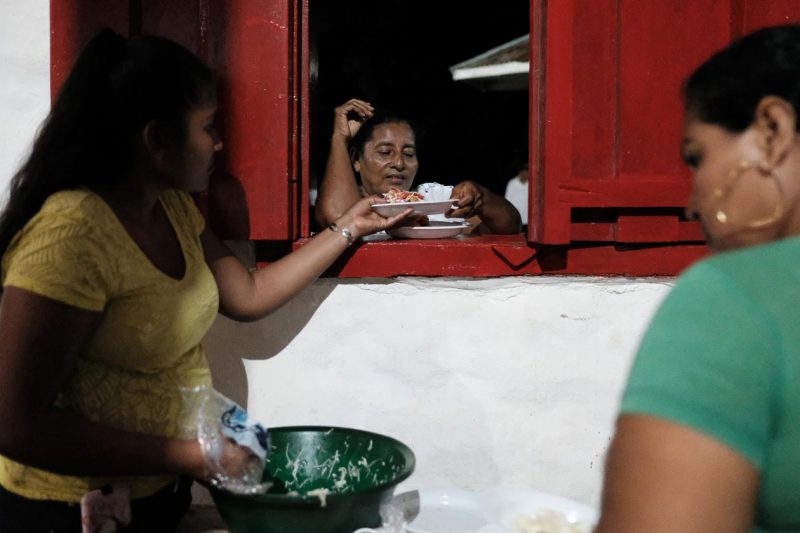
Prior to burying his ashes, the community held a farewell dinner for the poet and key figure of Liberation Theology. | Photo: Carlos Herrera
The evening fell, drenched in heat, the crickets began their chirping, and the projector was lit and directed at the white wall of the church where Cardenal spoke of the Gospels with the farmers, promoting their utopia, created in the contemplative dimension and later, as revolutionary. Many farmers, friends and family members of the poet took their turn to speak. But the funeral rites truly began when the vigoron was served (yuca root, fried pigskin and cabbage salad). Everyone from Solentiname were called to the same table.
“This is how we lived with him,” explained Esperanza Guevara Silva, from the side door of the church painted in primitivist art, while observing the communion of dozens of servings of vigoron. “After mass we would have lunch or a dinner, a meal with the father…and that was to continue the Eucharist. We are here in a Eucharist with Christ,” she insisted. It would be Solentiname’s last supper with their Father Cardenal, under a night sky of bright stars, reflected by the calm waves of Lake Cocibolca.
Archivado como:
PUBLICIDAD 3M
Periodista. Destaca en cobertura a violaciones de derechos humanos: desplazamiento forzado, tráfico ilegal en territorios indígenas, medio ambiente, conflictos mineros y ejecuciones extrajudiciales. Premio Iberoamericano Rey de España 2018.
PUBLICIDAD 3D